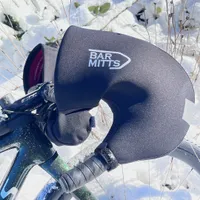Best winter cycling gloves 2025 - how to keep your hands warm in the coldest months
Good gloves are vital for the enjoyment of winter cycling and safety if you are riding through the colder months
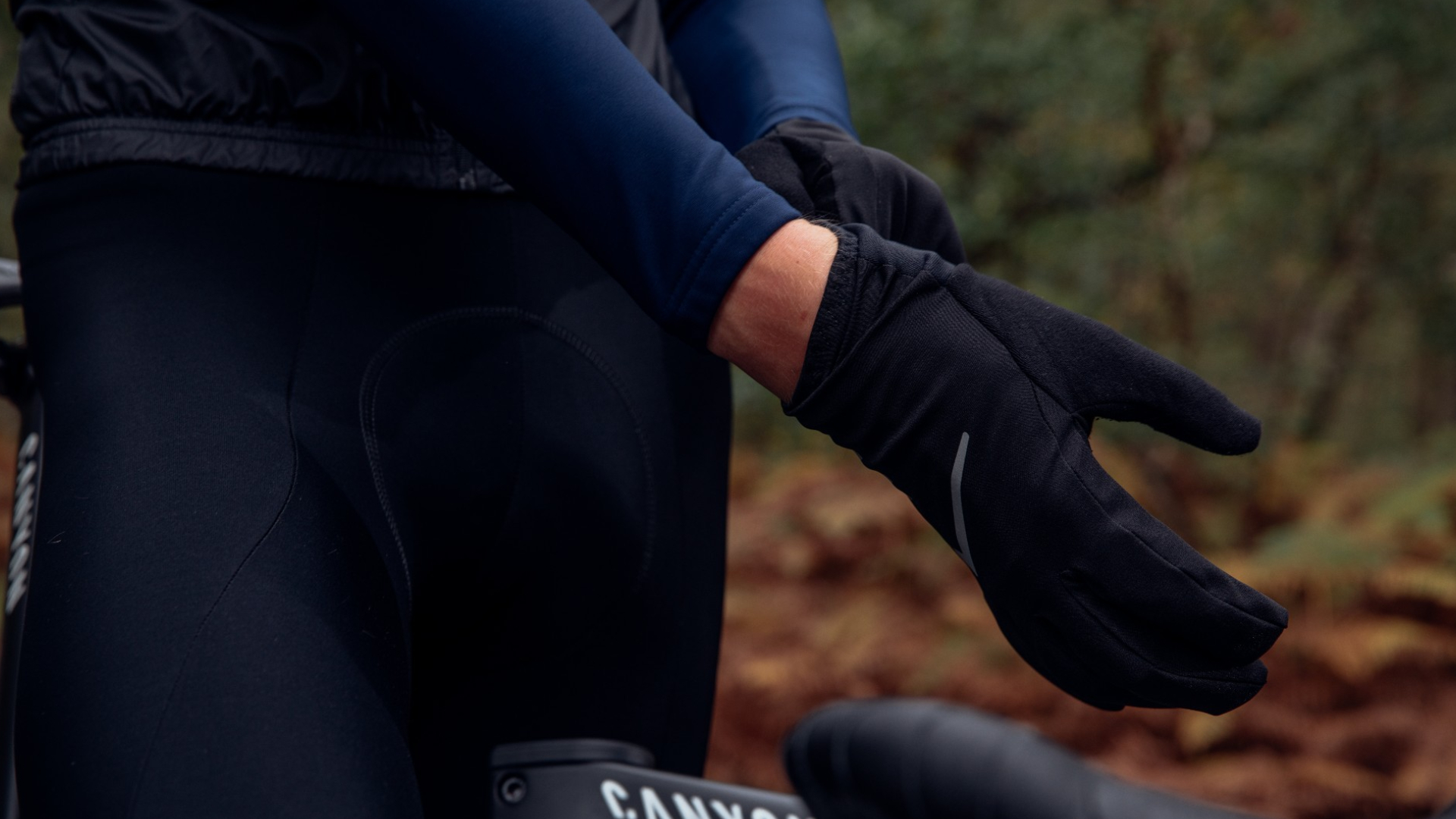
Cold hands on a bike are at best uncomfortable and at worst dangerous. Numb fingers won’t operate gears and brakes very well and can turn a bracing winter ride into an unpleasant sufferfest, which is where the best winter cycling gloves can save the day.
Stuck out on the end of our limbs, keeping our hands (and feet) warm from the elements is challenging. Additionally, the ongoing fight-or-flight response, with our body's desire to return heat to the core, coupled with limited mobility while riding, makes the situation even more challenging.
When the temperature drops, our instinct is to grab the thickest and warmest gloves we own, which can often hinder dexterity when operating the bike's controls, such as brakes and gears, as well as unwrapping snacks and checking directions on our phones or best bike computers.
Protection from the wind is the most crucial factor in any winter cycling glove; even on a perfectly still day at a reasonable 8°C, at a riding speed of 40kph, the wind chill reduces the effective temperature to 3 degrees. Even if the gloves aren't waterproof, they need to be able to retain vital heat. This is, of course, always a trade-off as you want the glove to be breathable to moderate the temperature to prevent a 'bin-bag effect'.
This is why we rate the Castelli Estremo winter gloves so highly, and award them our Best Overall title. Castelli has managed to balance warmth and dexterity perfectly, avoiding it from becoming a cumbersome Ski glove while upholding performance even at sub-zero temperatures.
We can't talk about cold hands without mentioning cold feet, for those who consider upgrading their winter wardrobe with a pair of the best winter cycling shoes or look to cover up with the best cycling overshoes.
The quick list
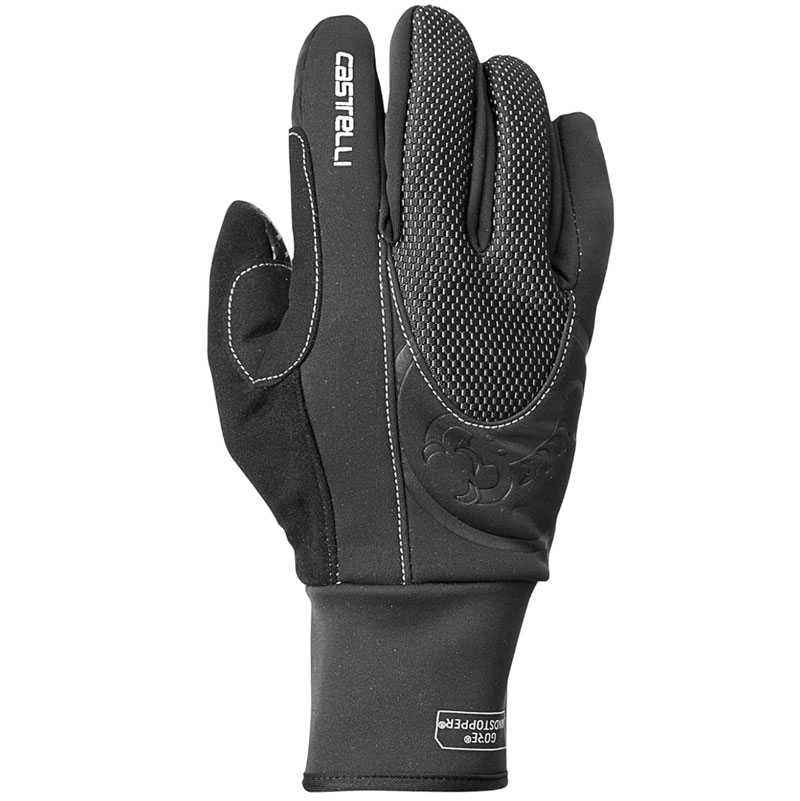
Castelli has managed to succeed in the tricky task of making a winter glove that’s warm enough for sub-zero temperatures without turning into a cumbersome ski glove. The gloves feel lightweight and allow you to move your fingers comfortably.
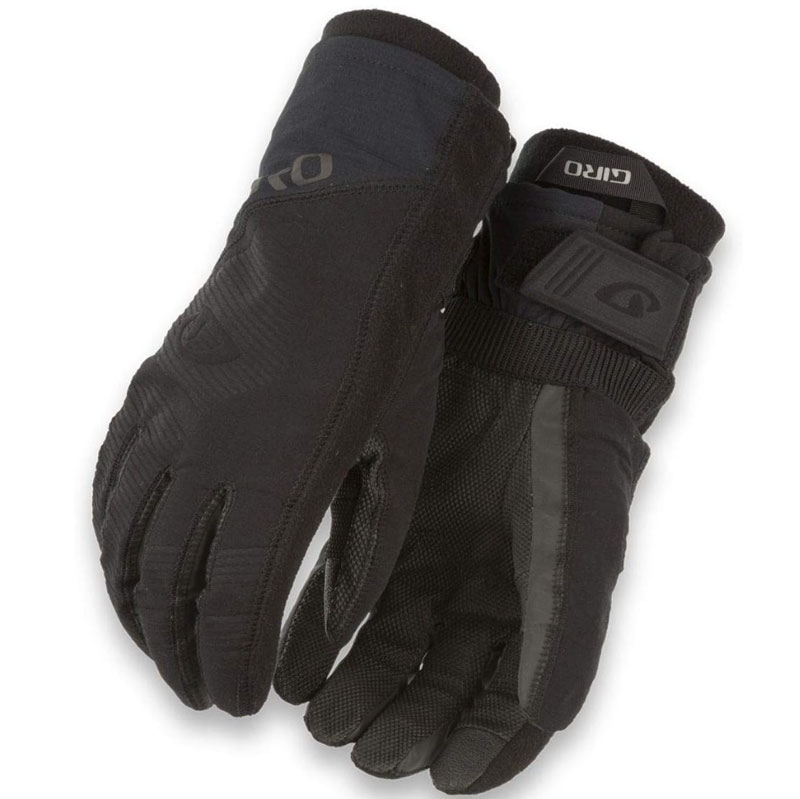
Designed to perform in cold, wet conditions, the Giro Proof is extremely warm. The blend of technical fabrics and good design allows for decent freedom of movement despite the bulk and the build quality impressed us too.
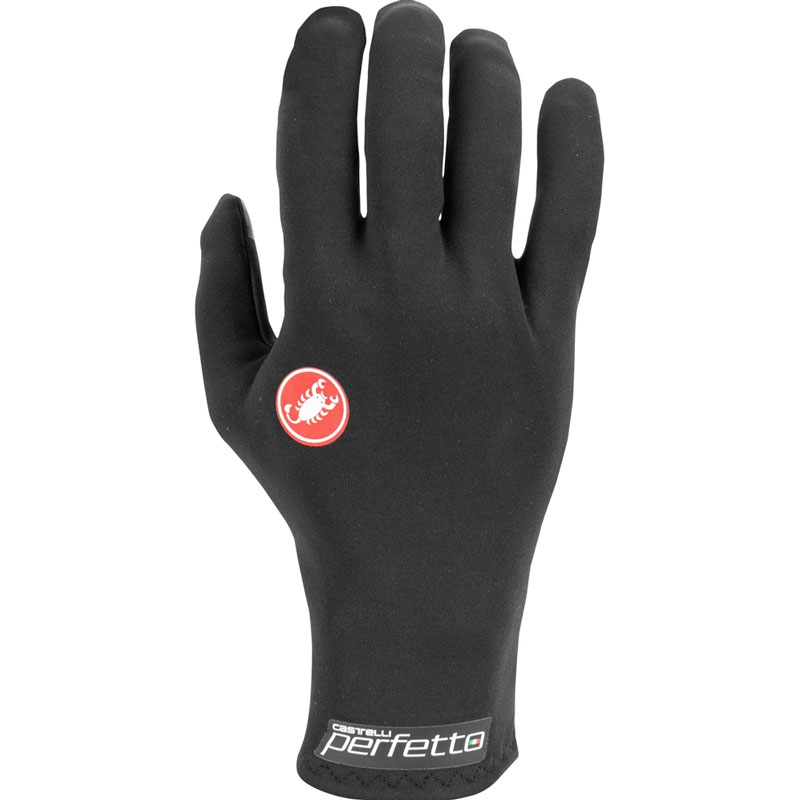
Castelli's Perfetto RoS is a superb cool weather option. There is enough insulation to stave off chilly hands whilst the Gore Infinium Windstopper fabric blocks cold breezes. Bar-feel and dexterity are also top-notch and the cuff covers the wrist nicely too.

Comfortable, breathable and with good weather protection, the Pro Team gloves from Rapha are great for non-Baltic days. Dexterity is excellent, and the gloves are very low-profile all-around, so are far less cumbersome than some.

The Giro Xnetic H20 gloves are a great wet-weather option and more. They’ll keep your hands warm and dry without the bulk of a more traditional winter glove or the clamminess of neoprene.
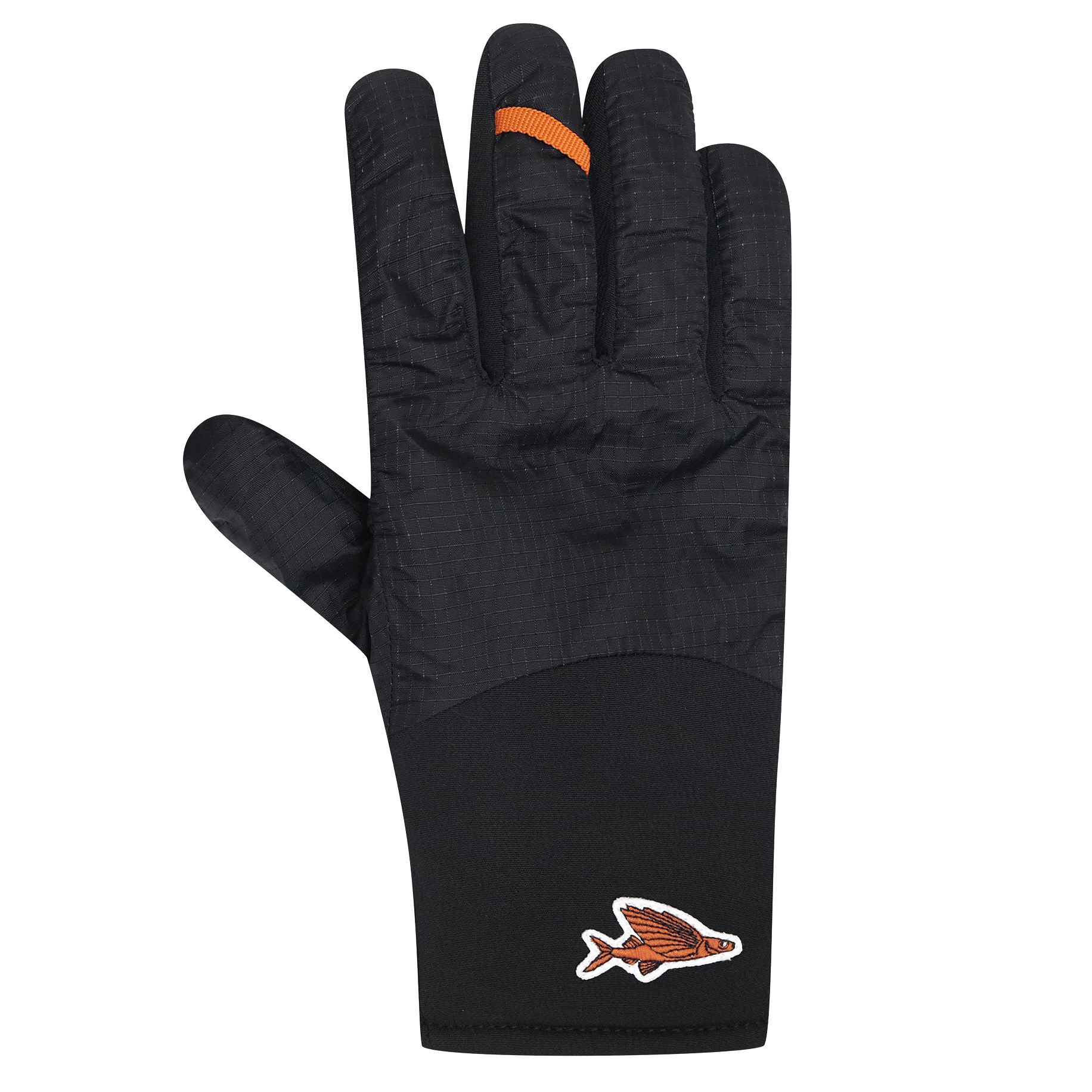
The Café Du Cycliste winter gloves perform exceptionally; I’d go so far as to say they are unmatched for warmth in deep winter riding, primarily thanks to the use of the HDry membrane, which offers superb, environmentally friendly waterproofing.
Best winter cycling gloves 2025
Best overall winter gloves
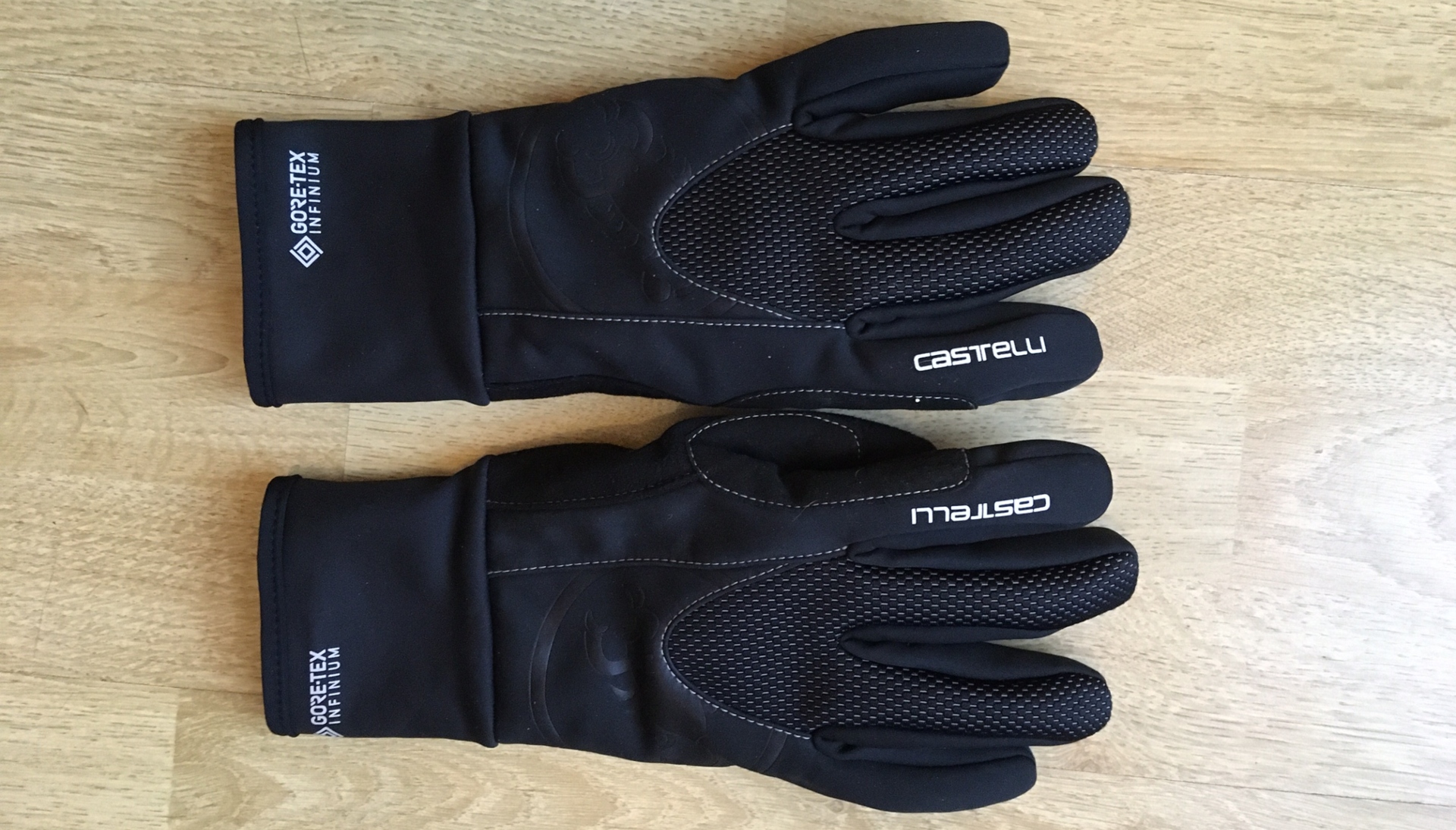
The Estermo is equipped for low temperatures thanks to windproof material and long cuffs
Specifications
Reasons to buy
Reasons to avoid
Castelli Estremo gloves are billed as the Italian's brand 'warmest cold weather glove'. After testing we found this to be accurate. The Estremos kept our hands warm in below-freezing temperatures, while still allowing us to maintain plenty of bar feel.
The blend of fabrics is spot on. The Gore-Tex Windstopper material on the top of the glove and the cuff keeps out the worst of the weather, while that long, adjustable cuff does a stellar job of sealing the heat in. Inside the fleece material feels luxurious, as do the gloves as a whole. Detailing is high, with regards to the silicone palm grippers and the padding, although a tad more reflectivity would be appreciated.
The Estremo gloves may be expensive but it's hard to put a price on keeping your hands truly warm. If you intend on cycling through the winter then you could do far worse than invest in a pair of these gloves.
- Read our full Castelli Estremo winter gloves review
Best for absolute warmth
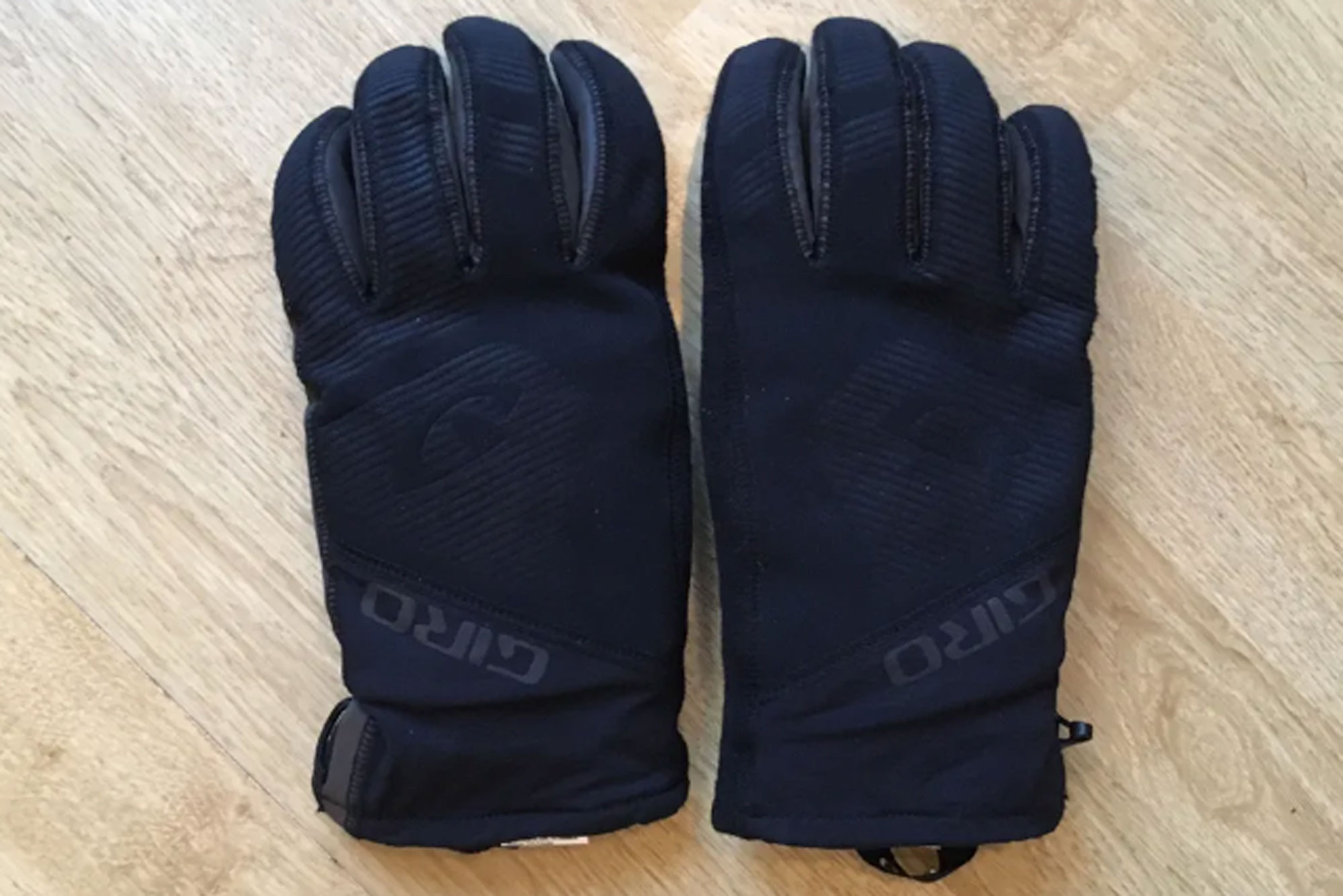
Giro's Proof winter gloves are certainly warm if not a little bulky
Specifications
Reasons to buy
Reasons to avoid
The Giro Proof is the five-fingered sibling of the previous Giro Proof 100 lobster mitts. Here you get the same level of impressive warmth but with increased dexterity thanks to the traditional glove shape.
The build quality is high, with fabrics that provide plenty of protection against the elements as well as being durable. As with the Proof 100s, we found that one of the only drawbacks is the gloves' nose wipe. It's made from a lovely soft fleece material but is far too narrow to do its job well. Otherwise, this is a sturdy glove that kept us nicely warm through the coldest winter days.
- Read our full Giro Proof winter gloves review
Best for mixed conditions
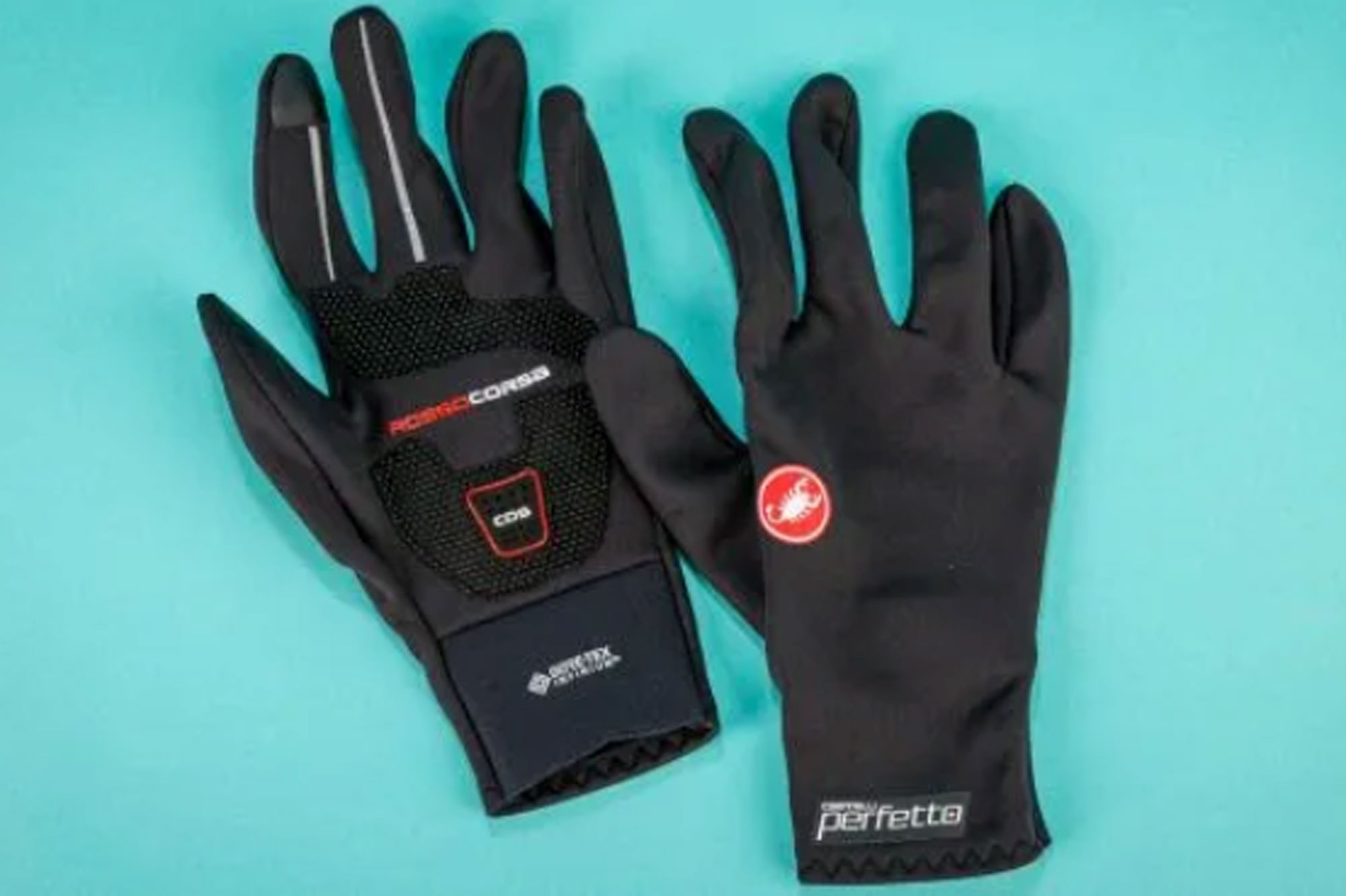
Castelli Perfetto RoS gloves offer warmth without the bulk
3. Castelli Perfetto RoS gloves
Our expert review:
Specifications
Reasons to buy
Reasons to avoid
On test we absolutely loved the Castelli Perfetto RoS gloves, finding them so close to being the best winter cycling gloves that we gave them a coveted Cycling Weekly Editor's Choice award.
Using the latest Gore Infinium Windstopper fabric, the Castelli Perfetto RoS gloves manage that difficult balance between adequate insulation, water repellence and windproofing on the one hand (pun intended) and bar feel, ride comfort and dexterity on the other.
With a light fleece lining, there's enough warmth to keep the hands warm and even after hours of light rain, they stay dry. Once the water does make it in, your hands still stay warm and there's enough dexterity to work the controls and keep yourself fed as you ride.
- Read our full Castelli Perfetto RoS Gloves review
Best warmth vs bulk
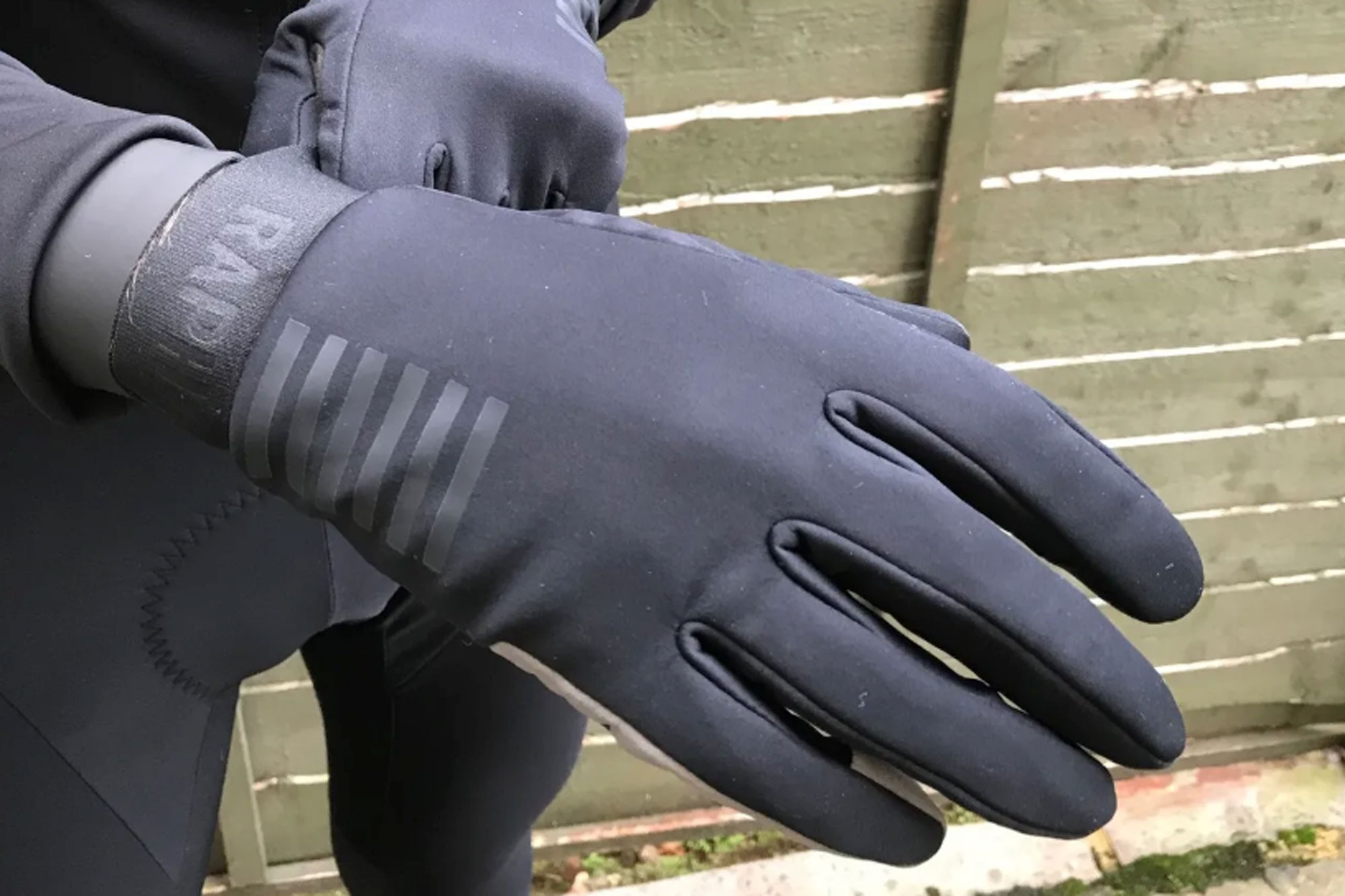
Rapha Pro Team Winter offering are a sleek, high performing winter glove
Specifications
Reasons to buy
Reasons to avoid
The Rapha Pro Team Winter Gloves stand-out feature is their lack of bulk. On test we were impressed at how this low profile package was capable of keeping hands warm, performing exceptionally well at really low temperatures.
We loved the minimal padding on these and found them the perfect winter cycling glove for its excellent grip in all weather with zero dexterity compromises, including both navigating a touch screen and unwrapping a mid-ride energy bar. They're certainly a high-performance choice and we found them to be the best winter cycling gloves to pull on for winter league racing.
The windproof back of the gloves does a very good at blocking the cold, but it's worth noting that these are water resistant, not water proof. So in the rain, the backs of the gloves do keep out the water thanks to a DWR coating (which will need reapplying at some point) that makes raindrops bead off, but we did find that the synthetic suede palms absorb it.
There is no denying the high price tag that the Rapha Pro Team Winter Gloves command, more than both the other 'elite' brands winter offerings, such as the Castelli Perfetto RoS gloves. However, if you want the perfect winter cycling glove for racing, then these are spot on.
- Read our full Rapha Pro Team Winter Gloves review
Best value winter gloves

Warm, lightweight, breathable and waterproof, the Xnetic gloves are adaptable across a range of winter riding conditions
Specifications
Reasons to buy
Reasons to avoid
Giro's Xnetic H20 gloves are billed as waterproof, and they are. But they are also more than just something to reach for when the skies threaten rain. Thanks to their lightweight, minimalist design they work well as a go-to-glove for cool conditions, whether you're heading out on a long road ride or popping to the shops on your bike. At just 62g for the pair, they store away easily too.
The Xnetic's low weight also means that once on you barely notice that you're wearing them. This can also be attributed to the high level of stretch, which sees the glove conforming to your hand shape with ease. It also creates a good seal at the wrist, stopping any unwanted drafts from entering.
Unlike traditional neoprene gloves, the Xnetic gloves offer far greater breathability. On test, our hands never got overly sweaty. Surprisingly for a glove that allows this degree of moisture management, they also did a stellar job of keeping our hands warm, working well in temperatures in the low single digits celsius, and keeping them dry through persistent showers and the occasional heavier downpour.
The technology at work here is well disguised. This is a simple-looking glove that will be appreciated by any minimalist. However, the three-layered fabric, which almost has the look and feel of a knit glove, blends a durable outer with a waterproof membrane and a hypoallergenic lining. And it works very well indeed.
- Read our full Giro Xnetic H20 gloves review
Most waterproof winter gloves
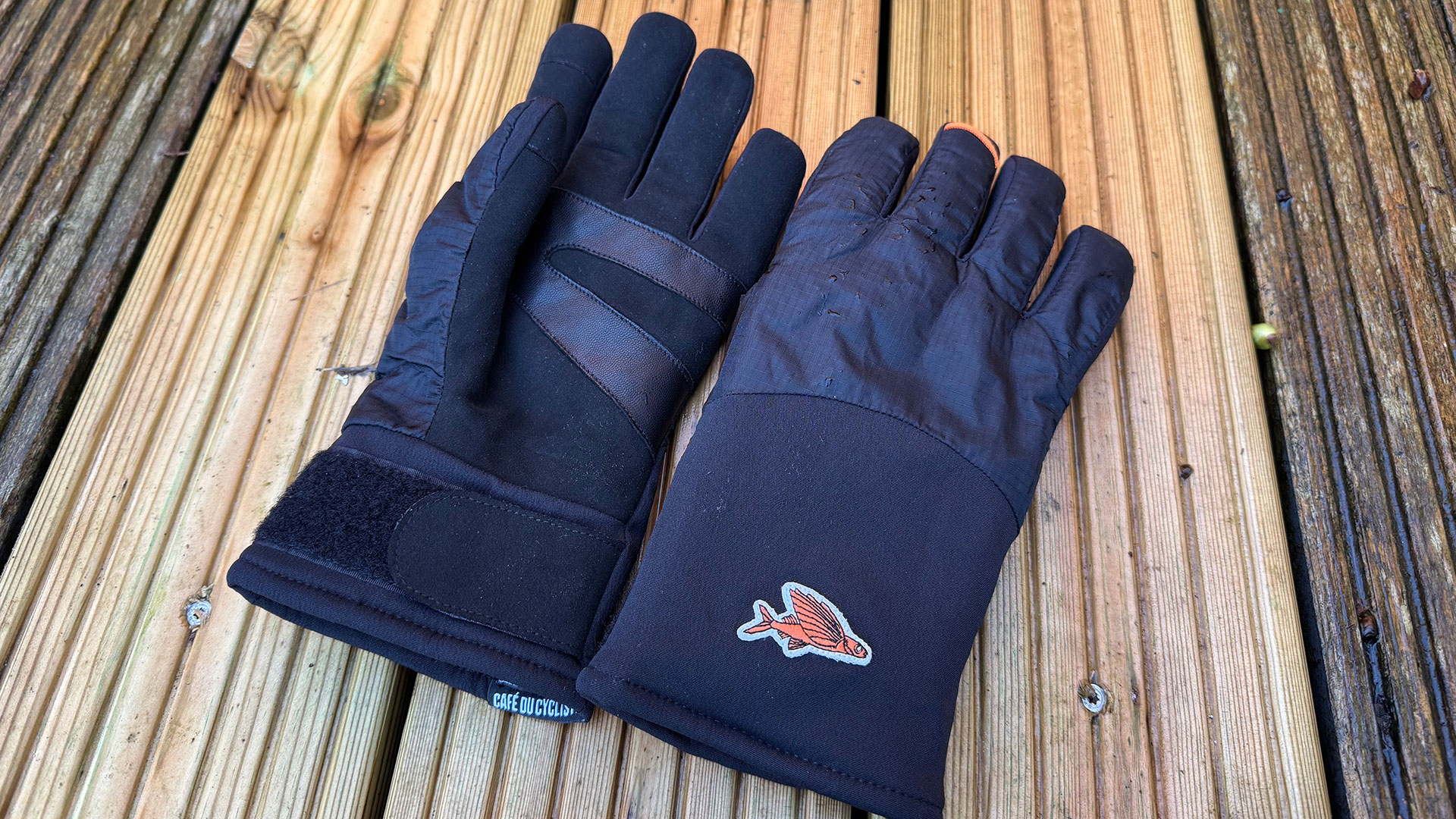
Waterproofing and warmth are the name of the game here, which does come at the cost of dexterity
Specifications
Reasons to buy
Reasons to avoid
The Winter Gloves from the French brand Café Du Cycliste feature several notable environmentally friendly techniques, which is impressive considering many brands are still struggling to switch their jackets to more planet-friendly materials and coatings. This makes these gloves quite advanced, not only in their performance but, unfortunately, in their cost too. Nonetheless, I am always happy to pay a bit more for something that is well made and has a smaller impact on the environment.
A large part of both CDC's winter glove performance and low environmental impact is the deployment of the HDry membrane laminated to the inner of the glove shell. Membranes perform much better than coatings, offering greater durability and waterproofing; however, they traditionally provide a less breathable garment. Waterproofing is top-notch, and I am pleased to report that breathability, largely due to the fleece lining's high wicking properties, is also excellent. That said, on dry and milder days when temperatures exceed 5 degrees, I recommend choosing a different glove.
As with many winter gloves, this excellent performance comes at the cost of a quite bulky finish. I did experience several Di2 misshifts as a result. On the other hand, several practical features often lacking in bulk gloves make the Café Du Cyclistes stand out from the crowd. The touchscreen function is touch and go but much better than others, they are easy to get on and off and the cuff strap doubles up to keep the gloves together and reduce bulk in your pockets.
One thing that can you can't escape is the cost. If you know Café Du Cycliste, you will not be surprised to know these are the most expensive gloves I have ever tested. However, their deep winter performance, attention to detail, and environmental credentials go a long way to justifying this cost.
- Read our full Café Du Cycliste Winter Gloves Review
Honourable Mention
It is worth mentioning that there are alternatives to the best winter gloves; they are by no means flawless or a silver bullet, but for those who are willing to try something else, these are worth considering.
For those who ride motorbikes, you may already be familiar with the concept of 'Pogies', and given how popular they are among our motor-driven road-using brothers and sisters, it is a wonder they haven't become more widely adopted in cycling. Our North American Editor, Rook, put the Bar Mitts to the test on what she called a Type 2 winter adventure in the PNW and found them to be rather good.
Read Rooks full Bar Mitts bicycle pogies review
How we test the best winter cycling gloves
Testing the best winter cycling gloves inevitably means the Cycling Weekly team of expert testers have to go and get a bit chilly. Which is not too much of a hardship, given that many team members prefer to be out grinding out the miles in pursuit of finding the best cycling products, rather than staring at a blank wall watching an avatar do yet another lap of Watopia.
Regarding how we put the best winter gloves through their paces, it is simple. Much of which involves verifying manufacturers' claims and identifying areas where a particular glove excels or falls short. Our focus as testers really lies in a glove's ability to, of course, keep your hands warm and dry (if that is claimed). While this is mostly subjective, as it depends on your tolerance, we do occasionally deploy a thermometer to verify our statements.
Given how also the subjective nature of fit, our testers will tend to focus more on the dexterity of a glove and how it functions in day-to-day use. This will include using screens and simple tests, such as putting on and taking off gloves when they are dry and wet.
For more information on how the Cycling Weekly team puts all the best cycling products to the test, visit our How We Test guide.
Anatomy of a good winter cycling glove and how to choose
Does owning a pair of winter cycling gloves make a difference?
Let's start with the need for a winter glove, and in short, yes, it makes a tremendous difference.
You could decide to just ride in a pair of general winter gloves when it gets cold, but you'll find that they lack several cycling-specific details. Unlike ski gloves, for example, the best winter cycling gloves cannot depend on super-thick padding because we need to retain sensitivity so that brakes, shifters or any electronic road bike groupsets can be operated efficiently.
Instead, they use a blend of fabrics that keep the weight down while maintaining dexterity and still offer protection against the elements. Keeping out the wind is crucial: fabrics such as Gore Windstopper and similar materials will do this, and feature on the best winter cycling gloves, while also offering water repellency and breathability. The inner padding and/or membrane vary from glove to glove, depending on the intended temperature of the glove, whether it is for deep winter or a chilly and wet environment.
With more cyclists using one of the best cycling computers, or even just one of the best cycling apps, the best cycling winter gloves will also have touch screen sensitivity integrated into the fingers, preventing you from having to remove one to swipe the screen or navigate controls.
What makes a winter cycling glove windproof?
The main layer of protection on the best winter cycling gloves should be an impermeable windproof layer designed, as you can guess from the name, to keep cold air and wind away from your hands.
One of the most popular fabrics for this is Gore's Windstopper fabric, or Infinium as it's also known as. It's used in lots of the best winter cycling gloves across many brands aside from Gore itself. There are other options made by different manufactures too that can work just as well.
Regardless of the brand, the fabrics should work to keep the elements out while still being breathable enough to prevent your hands from overheating and getting sweaty.
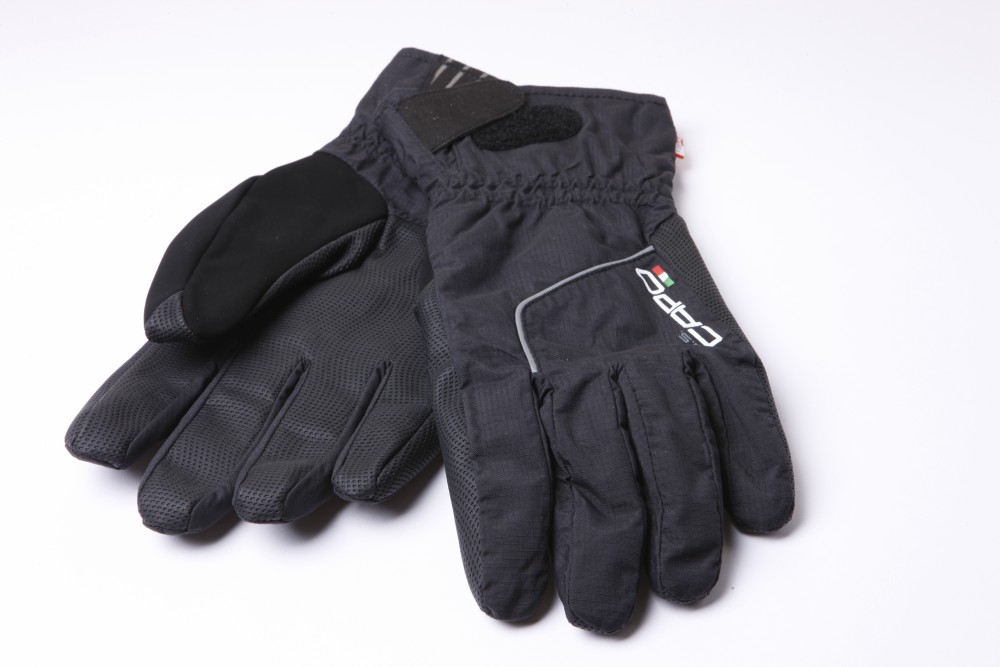
Capo winter gloves
How do winter cycling gloves retain heat?
The second line of protection in the best winter cycling gloves is a thermal layer designed not only to keep the cold air away from your skin but also to make sure that any warm air generated by your hands is trapped and not allowed to escape.
What's important with the thermal layer is that, unlike with skiing gloves for example, it can't be too thick, as you need to maintain your dexterity to be able to feel which lever your finger is on to change gear and to be able to manipulate the brake lever.
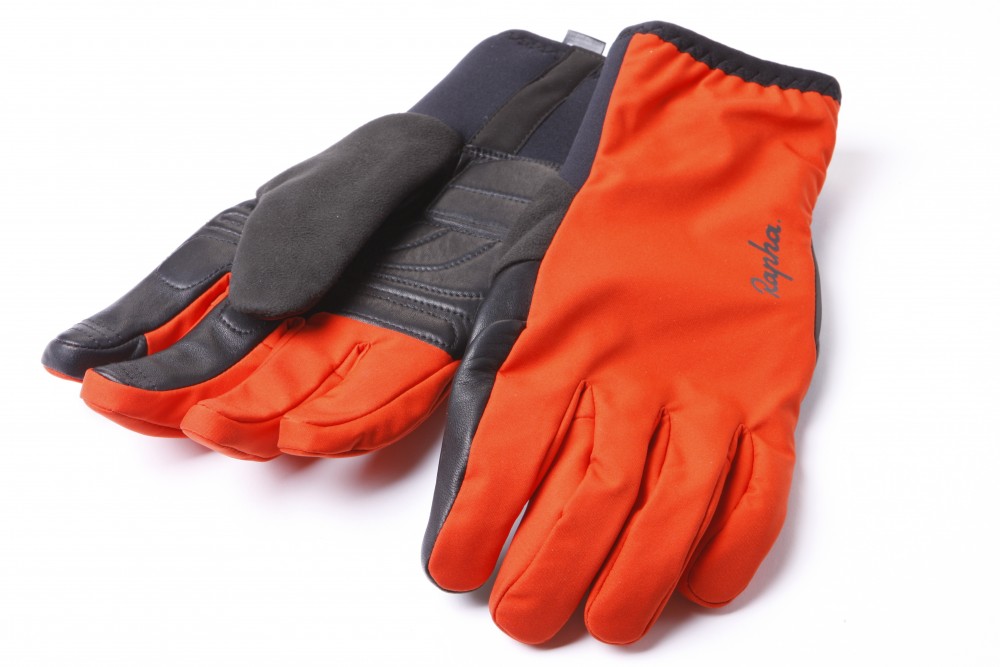
You'll want gloves with a good layer of thermal protection to keep warm air in
Do I need my winter gloves to be waterproof?
Not many people enjoy riding in the rain, but if you're going to keep your training up through the winter, then you're going to want the best winter cycling glove to handle even the wettest weather.
In milder weather, it's not vital to have completely waterproof gloves. Your skin is waterproof after all, so as long as you have gloves that keep your hands warm, they don't necessarily need to keep you dry. Options such as a wet weather neoprene glove can work well in cool (but not cold) conditions. They're often basic in style, with no padding or additional features, such as cuff adjustment.
However when the temperature drops further still, and the rain (and even snow) begins to fall, then you're going to want some more serious winter cycling gloves with an outer layer that will keep the precipitation at bay.
Like any windproof outer layer, a waterproof layer on the best winter cycling gloves should be impermeable to the outside elements to keep your hands dry, but should also be breathable to prevent your hands overheating, particularly over the course of long rides.
It's also important not to forget about your extremities at the other end by prioritizing a pair of the best cycling overshoes to protect your feet against the elements too.
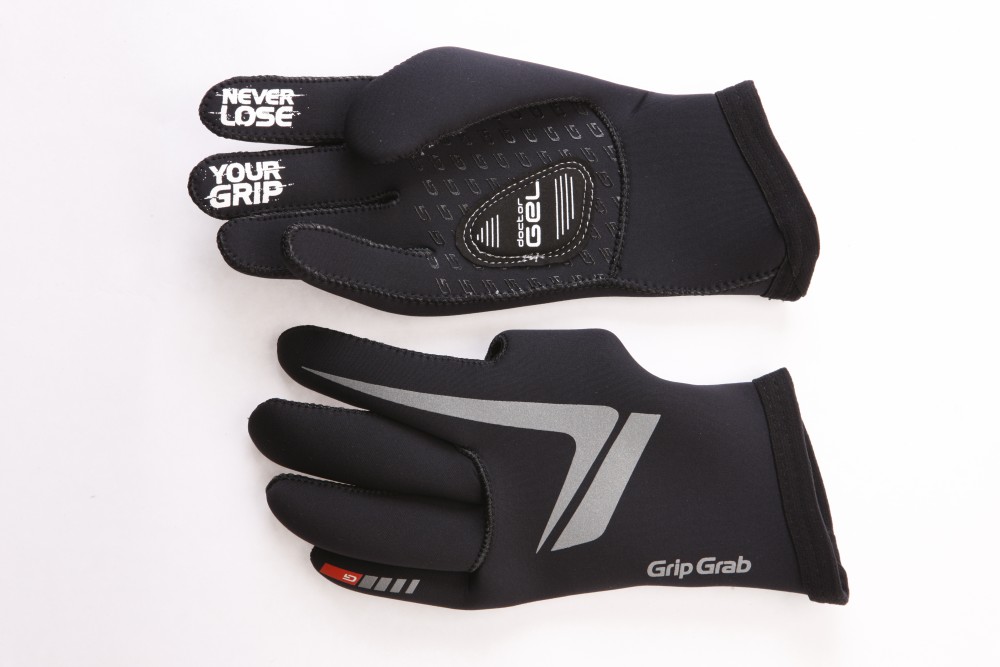
Neoprene gloves, such as these GripGrab ones, are good options for wet but mild weather
What makes for a good cuff on a winter cycling glove?
If you're heading out in breezy conditions, the best winter cycling gloves will have long cuffs to help keep that chilly northeasterly out of your sleeves.
However, it's not always just a case of the longer the better. Your gloves, and the cuffs attached, need to work well in unison with your choice of jersey or jacket. Sealing in the heat, and keeping out the drafts, is crucial if you're going to stay nice and cosy while putting in those long winter miles.
This means you've got a decision to make as to whether you wear the cuff of the gloves over the top or underneath the cuff of your jacket.
If your jacket has loose sleeves then it's worth getting a pair of gloves with a tight cuff, over which you can pull the sleeves of your jacket. This is also the case when it's raining. If your jacket is waterproof, then the rain beads off the arms and will end up filling the gloves from the top like a bucket. Velcro straps or zips will help mitigate this slightly, but tucking in is the best form of rain defense.
When the weather is dry, then running cuffs over the sleeves is by far an easier option, especially if you have to remove your gloves to use a touchscreen.
If you do find yourself running hot in the middle of a winter club run, pulling down cuffs can be a good way to cool off. Your blood runs so close to the skin at the wrist, this can be an excellent place to control your body temperature.
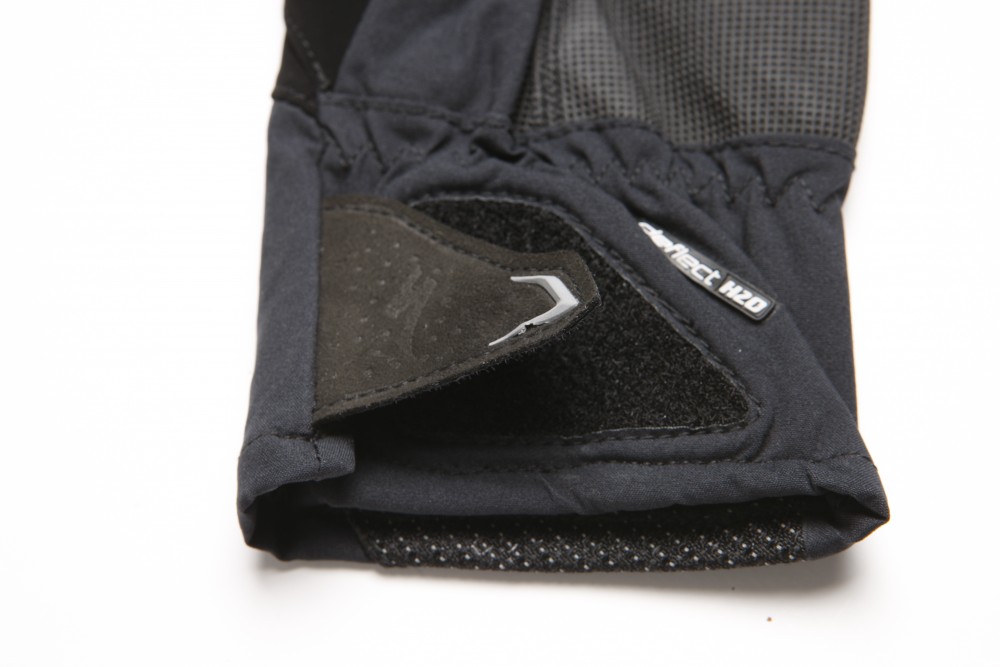
What are the best palm materials for a winter cycling glove?
Riding on wet or even icy roads can be treacherous, so being completely in control of your bike is more essential than ever. Even holding on to the handlebars in the wet can be difficult, particularly if you're using smooth bar tape.
With this in mind, the best winter cycling gloves will have a slightly tacky surface on the palms to make sure you can maintain a secure grip on both the bars and the brake levers. These can vary from silicone grippers applied directly to the palm or additional textured material.
If you feel the need to upload a gritty Instagram selfie to show your mates just how hard you are for heading out when it's blowing a gale and hammering it down with rain, then you're going to need to be able to prod away at your smartphone screen. Luckily, some of the best winter cycling gloves now come with fingertips specially designed to be used with touchscreens.
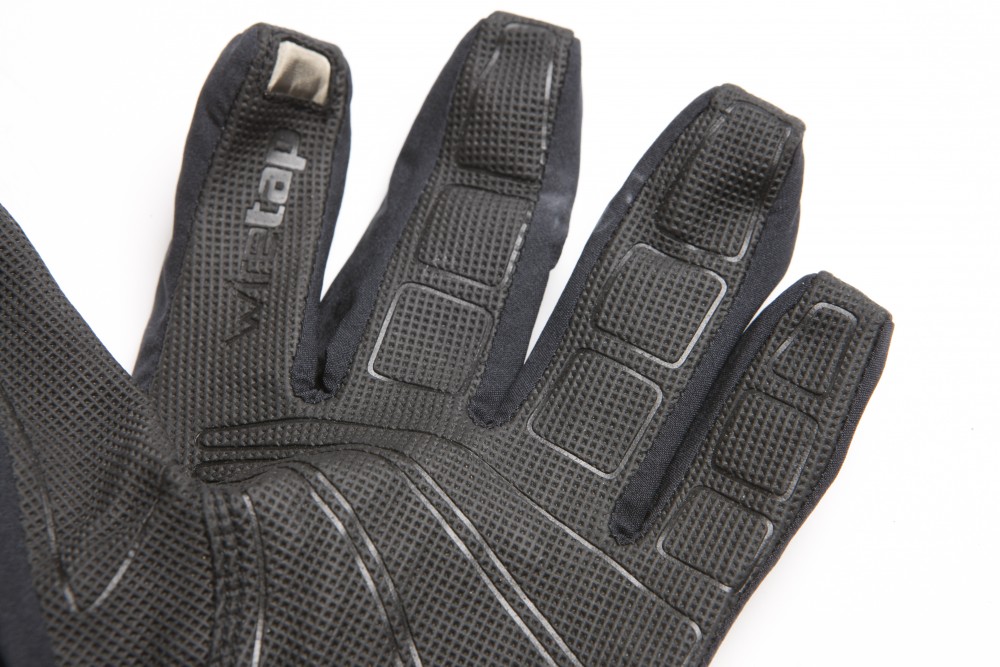
What's a nose wipe and do I need one?
A nose wipe is an absorbent patch, usually located on the thumb with which to wipe a running nose. Most of the best winter gloves for cycling will have one. However, they aren't all created equal. If you suffer from a runny nose when cycling in cold weather it's worth looking for a glove with a generously sized wipe. It's also vital that it's made using a soft material, such as a fleece-like material that feels pleasant against the skin. This area is also useful for wiping rain and road grime off your cycling glasses, but maybe not straight after mopping up some snot...
Frequently asked questions about winter cycling gloves
What are the warmest winter cycling gloves?
According to our testers, the best deep winter gloves for keeping your hands warm are 'hands-down' (pun intended) the Giro Proof Gloves. We found that Giro's smart use of technical fabrics kept the bulk to a minimum while performing at much lower temperatures than any other gloves we have tested. For a five-finger design, their performance is truly impressive.
How to keep hands warm when cycling in winter?
We have a comprehensive guide on how to beat cold hands and feet during the winter, especially for those who suffer from Raynaud's. Here are some top tips from that guide to get you thinking:
- Try 'Lobster' gloves - the theory behind these funny-looking gloves is that they allow heat to radiate between your fingers better and minimise the surface area exposed to the elements. However, for cycling, they don't allow for the best dexterity, especially for those with electronic shifting.
- Heat pads or even heated gloves (yes, they do exist) - while these two items are ideal for Raynaud's sufferers specifically, they tend only to heat one area, typically the palm or wrist.
- Layer up - While most gloves won't allow for this, this solution is ideal for racers, as it upholds dexterity by enabling you to layer a couple of thinner gloves or even a rubber or latex glove; however, this can make it a bit 'bin baggy'.
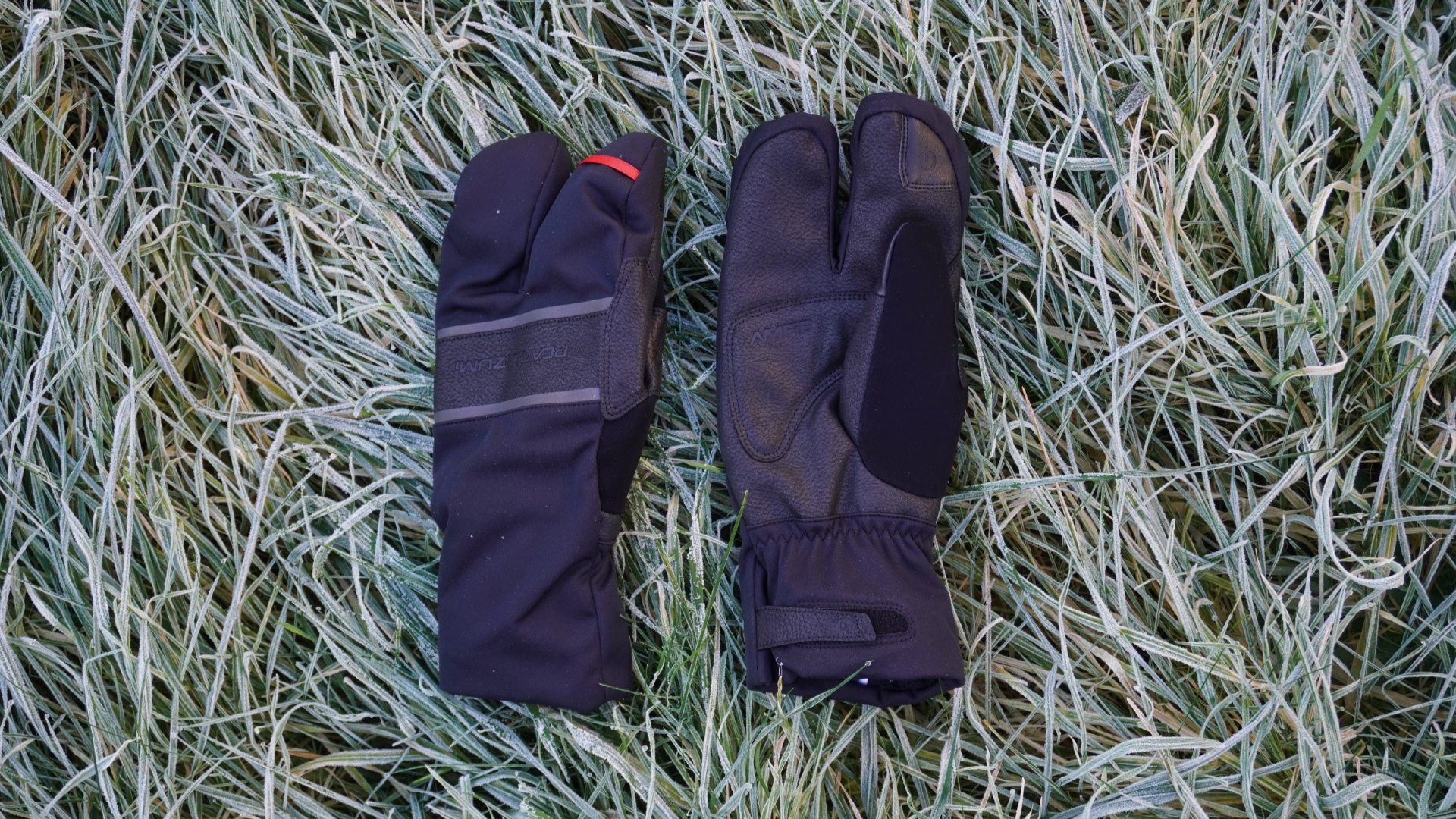
What are lobster gloves and should I consider them?
As I mentioned above, 'Lobster' style mitts are gaining popularity, especially among those who suffer from Raynaud's. The science behind them is simple, really, but they don't work for everyone.
Popular amongst alpinists and mountaineers ,the idea behind a mitt or 'lobster claw' mitt is to allow the body to radiate its heat between the extremities naturally. Thus, it also reduces the surface area exposed to the elements and, of course, the amount of seams and stitching through which heat can escape.
There is a significant draw to riding mitts, and that is dexterity. Controlling the bike, especially those equipped with electronic shifting, does become tricky. However, if you can make them work, they can be a game-changer.
There are alternatives. CW North American Editor Rook is a big fan of Pogies. The aptly named Bar Mitts effectively put the bulk on your bar rather than on your hands, allowing you to wear a thinner glove, maintaining dexterity but also increasing your warmth. They are, however, not the most attractive bike accessory, and changing hand position becomes a bit tricky, and they don't work on the drops.
Are neoprene cycling gloves warm?
While neoprene gloves are very popular amongst watersports enthusiasts specifically, their use in cycling has dwindled over the years. The magical, predominantly black material is designed not to be waterproof; instead, it uses tiny pockets of trapped air warmed by your body to insulate you.
Two issues in cycling are firstly, fit. Wetsuits and the like can be almost compressive as they have far fewer contours to navigate, allowing much more air to be trapped. Whereas a glove is tricky to get a good fit, especially one that works for cycling.
The second is thickness; not just any old neoprene is good. Depending on the quality and where you are using it, the thickness varies.
It's also worth mentioning the environmental impact of neoprene production. Its a Petroleum based product which makes it non-biodegradable, meaning it contributes to microplastic pollution.
The latest race content, interviews, features, reviews and expert buying guides, direct to your inbox!
Luke Friend has worked as a writer, editor and copywriter for over twenty five years. Across books, magazines and websites, he's covered a broad range of topics for a range of clients including Major League Baseball, Golf Digest, the National Trust and the NHS. He has an MA in Professional Writing from Falmouth University and is a qualified bicycle mechanic. He has been a cycling enthusiast from an early age, partly due to watching the Tour de France on TV. He's a keen follower of bike racing to this day as well as a regular road and gravel rider.
- Simon FellowsFreelance Writer. Former Tech Editor
- Tim Russon
